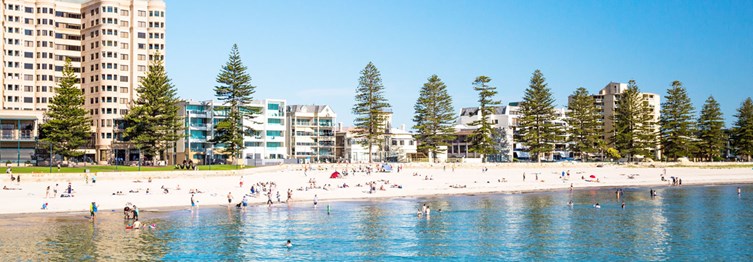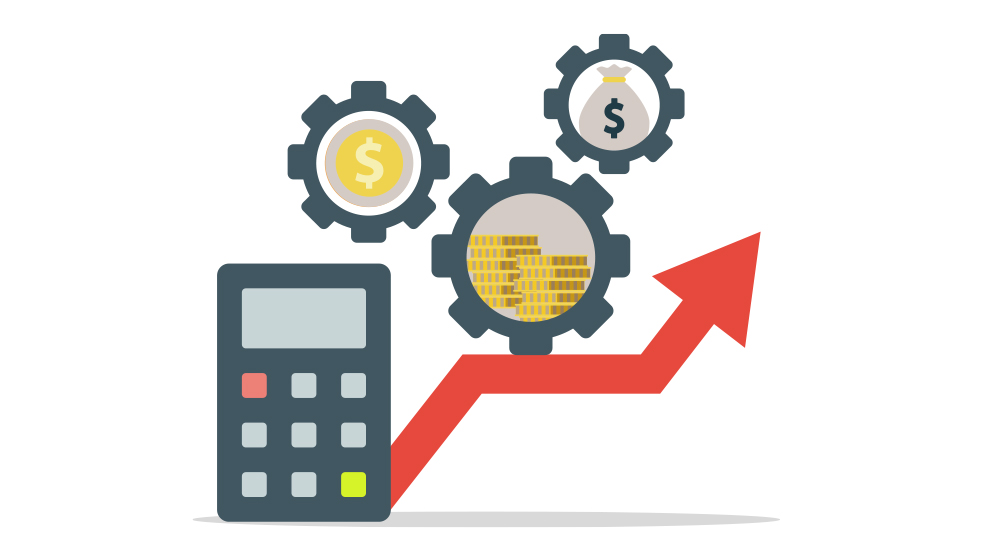SA Ambulance: Triple S
SA Ambulance
Section Heading
Historically, SA Ambulance members employed in an operational role with the SA Ambulance Service (and contributory members of the SA Ambulance Service Superannuation Scheme who transferred to Triple S) must have made after-tax superannuation contributions of at least 4.5% of their salary.
This requirement does not apply to those operational employees who are employed on a casual basis (casual employees), or those transferred members who are over age 60.
You now have an option of how you would like to make your mandatory contribution. You can elect to make before-tax contributions (salary sacrifice) of at least 5.3% of your gross super salary, instead of the after-tax contribution.
For more information on this change, please refer to the Significant Event Notice.
To change your compulsory contribution arrangement, complete the Ambulance Officers regular superannuation contributions form.
A before-tax and after-tax comparison
This calculation is for illustrative purposes only and for the 2025-26 financial year. You should consider obtaining financial advice in relation to your personal circumstances before making a decision about your compulsory contributions. This comparison is based on an operational full time ambulance employee who earns $110,000 per year.| Component | Salary Sacrifice Contributions (5.3%) | After-Tax Contributions (4.5%) |
| Gross Salary (ex Super) | $110,000 | $110,000 |
| Salary Sacrifice Contribution (5.3%) | $5,830 | - |
| Taxable Income | $104,170 | $110,000 |
| Income Tax1 | $24,122 | $25,988 |
| After-Tax Contribution (4.5%) | $4,950 | |
| Take-home Pay2 | $ 80,048 | $79,062 |
| Fortnightly Take-home Pay2 |
$3,069 | $3,031 |
Thinking about changing your compulsory contributions?
The following examples may assist you in completing the form.
Cancel compulsory after-tax arrangement and begin a salary sacrifice instead.
 Current contributions
Current contributions
Compulsory contributions to a Super SA Triple S account, set up as 4.5% after-tax contributions of gross salary.
 Future contributions
Future contributions
- Make the salary sacrifice contribution of 5.3% of gross salary the compulsory contribution.
- Then cancel the 4.5% after-tax contribution..
 How to complete
How to complete
Complete the Ambulance Officers regular superannuation contributions form in the following sections:
- Complete Section 1. Personal details.
- Section 2. Select your scheme: indicate which scheme the employer contributions are currently being paid to.
- Section 3. My compulsory contributions: select the option which indicates 5.3% before tax.
- Section 6. Employee Declaration: sign and date the form before returning it to the employer/HR delegate.
Cancel my after-tax contribution and switch the compulsory contribution to my existing salary sacrifice arrangement.
 Current contributions
Current contributions
Compulsory contributions going to a Super SA Triple S account, set up as 4.5% after-tax contributions of gross salary and an arrangement in place for voluntary 10% before-tax contributions.
 Future contributions
Future contributions
- Make the salary sacrifice contribution of 5.3% of gross salary the compulsory contribution and would like this to come from the existing before-tax contributions that are currently being made.
- Then cancel the 4.5% after-tax contribution.
 How to complete
How to complete
- Complete all sections of the Change my regular after-tax contributions form.
- In Section 4, enter 0%.
- Sign and date the form before returning it to Super SA.
Insurance
Most Triple S members will automatically be provided with Income Protection and Death and Total and Permanent Disablement (TPD).
There are some situations where members are not eligible for insurance cover due to restrictions in Triple S Regulations, other scenarios where insurance cover ceases and situations where a member is unable to make a claim for certain conditions. Some common situations are set out in this fact sheet.
Income protection
If you are employed as a SA Ambulance Operational members or a SA Ambulance staff who transferred into Triple S from the SA Ambulance Service Superannuation Scheme, you cannot cancel your IP Insurance until age 60.
You may receive up to 75% of your notional salary as income if you become ill or injured and are unable to work3. Premiums are deducted from your superannuation account balance.
Death and TPD
You have a choice in the level of your Death and TPD Insurance. Most members can increase3, decrease or cancel their Total and Permanent Disablement and/or Death Insurance at any time up until you’re 70. Premiums are deducted from your superannuation account balance.
However, if you are employed as a SA Ambulance Operational staff (excluding SA Ambulance Operational staff employed on a casual basis) or a SA Ambulance staff under age 60, who were contributory members to the SA Ambulance Service Superannuation Scheme before electing to transfer to Triple S, you automatically receive six units and cannot decrease or cancel these units until age 65.
Find out more >
The Triple S Scheme offers a range of investment options for our members to choose from. Each option is designed to achieve different investment objectives putting you in control.
The Balanced investment option is the default option. However, this may not necessarily be the right option for you.
You can:- Choose one or a combination of investment options
-
Invest future contributions, and your existing balance, into different options

Financial planning
Financial planning isn’t only about managing investments and making money. It’s about assessing your financial situation, understanding what your financial goals are and helping put together a plan to get you there.
More than anything else, financial planning can assist you to live your very best life.
The advice you may receive from a financial planner can be about simple things such as how to choose which investment options are most suited to you or what you should be contributing to your super. A financial planner may also get you thinking about what your insurance needs should be to protect you and your family should something unexpected happen.
A financial planner can also help with far more complicated financial situations such as estate planning, family break ups and trusts.
Financial planning is for everyone. Whether you’ve just started your career or are ready to stop working, have minimal wealth or a lot, it’s never too early or late to seek financial advice.
Back to top^
Frequently asked questions
-
Who is required to make compulsory contributions from their salary?
SA Ambulance Service employees who are employed either full time or part time in an operational role as identified in the SA Ambulance Award.
SA Ambulance Service employees under the age of 60 who were contributory members of the SA Ambulance Service Superannuation Scheme that have transferred to the Super SA Triple S Scheme.
If your role changes from Full Time or Part Time to Casual, your personal contributions will continue to Triple S as voluntary contributions unless you notify your employer via the Ambulance Officers regular superannuation contributions form.
If your role changes from Casual to Full Time or Part Time, you will be required to make compulsory personal contributions.
-
Where do I obtain the Ambulance Officers regular superannuation contributions form?
You can download the Ambulance Officers regular superannuation contributions form here.
-
Who is a contributory member of the SA Ambulance Service Superannuation Scheme?
Contributory members of the SA Ambulance Service Superannuation Scheme (Defined Benefit) are all permanent employees who joined the SA Ambulance Service before 1 July 2008.
All casual employees who joined the SA Ambulance Service before 1 July 2008 became Non-Contributory members.
SA Ambulance Service employees under the age of 60 who were contributory members of the SA Ambulance Service Superannuation Scheme who have transferred to the Super SA Triple S Scheme are required to make compulsory after-tax contributions of 4.5% of their gross salary to the Triple S Scheme.
-
What level of Income Protection cover do I have?
Most Triple S members are automatically eligible for Income Protection Insurance without limitation.
Members who do not automatically receive Income Protection insurance, such as casual employees can apply for cover.
This provides you with a fortnightly income of up to 75% of your notional salary plus a Contribution Replacement Benefit paid into your Triple S account equal to 9.5% of your fortnightly benefit while you are unable to work due to temporary incapacity through illness or injury.
- The maximum benefit period is up to 24 months for fulltime and part-time employees, up to 12 months for casual employees who have applied for cover, to age 65, or until your employment in the SA public sector ends, whichever occurs first.
- The cost of Income Protection Insurance premiums are automatically deducted from your Employer Account.
- The cost of Income Protection Insurance is based on your: – notional salary – age – waiting period.
- The default waiting period is 30 days but you can choose to have a waiting period of 90 days.
- Changing your waiting period will impact your premiums.
- The 90 day waiting period option has lower insurance premiums but you will have to wait longer before Income Protection payments commence.
Members have their notional salary limited to an Automatic Acceptance Limit (AAL) of $122,000.
If their salary is over $122,000 their Income Protection Insurance premiums and benefits will be based on a salary of $122,000 and not their actual salary.
Members subject to the AAL may apply for cover up to their notional salary.
Learn more
Section Heading
2 Does not include any other salary sacrifice arrangements or payroll deductions.
3Subject to being eligible for Death, Total and Permanent Disablement (TPD) or Income Protection (IP) cover through Triple S. If you wish to increase your cover you will need to provide health and medical information. Cover may be subject to limitations. Changes to your insurance will have an impact on your insurance premiums. See the Triple S PDS available at supersa.sa.gov.au for further information.









